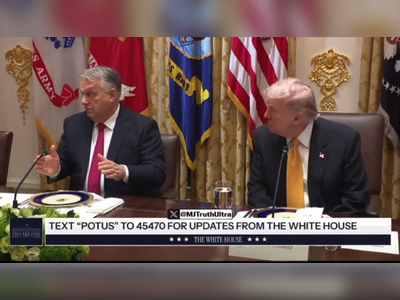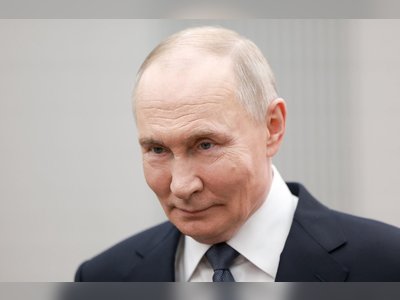China’s tech companies have had a rough 2019 but will the US be the long term loser amid ongoing stand-off?
For many of China’s technology companies, 2019 has been a rough year.
Following the arrest of Huawei chief financial officer Meng Wanzhou late last year over allegations of bank fraud and her ongoing US extradition proceedings in Canada, Huawei in May was put on a US trade blacklist that bans them from doing business with US companies.
Months later, some of China’s largest artificial intelligence firms such as SenseTime, Megvii and Hikvision were also added to the same blacklist amid concern in Washington that their surveillance technology was being used by China to commit human rights abuses against the Uygur ethnic minority in Xinjiang.
To top it all, TikTok – the wildly popular short video app operated by China’s ByteDance that has taken the world by storm – has recently come under US scrutiny over national security, privacy and censorship concerns.
All of this has happened against the backdrop of the US-China trade war, and increasing suspicion in the US over China’s ambitions to become a global leader in strategic technologies, such as AI and 5G.
“There’s a deep distrust [of China],” said James Lewis, director of the technology and public policy program at the Center for Strategic and International Studies, a research organisation in Washington, DC. “People worry that China is spying on them, and many people in Washington DC are convinced that China steals Western intellectual property.”
On the other side of the fence in Beijing, efforts to curtail Chinese technology companies’ access to US-origin products and services have been seen as the US attempting to contain the Middle Kingdom’s economic rise, spurring the country to double down on efforts to achieve self-sufficiency in core technologies such as semiconductors and software.
Putting companies like Huawei on the trade blacklist has exposed China’s soft underbelly – its reliance on foreign technology as part of a global supply chain. For example, by losing access to Google’s Android operating system for its new smartphones, Huawei’s overseas handset sales could soon fall off a cliff. Who wants an Android handset without Google apps? Stockpiling chips and other components will only cover Chinese firms in the short-run.
Even the basic-building blocks for a technology like AI are in US hands – small and medium-sized Chinese companies that work in the field almost exclusively use software from US-originated open-source platforms such as Google’s Tensorflow and Facebook’s Pytorch.
So what is China doing about it?
After relying on foreign software such as Microsoft’s Windows operating system and imported chips from the US and Taiwan for years, Beijing wants to create a road to self-sufficiency, even if this means a certain amount of ‘reinventing the wheel’. It has started by creating a US$29 billion state-backed fund with the aim of creating its own semiconductor supply chain as well as plans to invest more in basic research, science and technology spending.
“The US has lived up to its word in terms of stepping up what it sees as a competition with China, and it has followed through on its rhetoric,” said Andy Mok, research fellow at the Centre for China and Globalisation. “But this has backfired on the US, it has encouraged Huawei [and China] to accelerate its efforts to reduce reliance on the US and that really hurts American technology companies in the long run.”
The first signs of how China’s efforts to be self-sufficient in technology could unravel decades of international trade and global supply chains are starting to show.
Earlier this month, the Financial Times reported that Beijing has ordered government offices and public institutions to stop using foreign hardware and software within three years and switch to domestic vendors, with analysts estimating that 20 to 30 million pieces of hardware will be ripped out and replaced as part of the directive.
Meanwhile e-commerce and technology titan Alibaba Group Holding, which has vast troves of data collected from its millions of users that can be used to ‘train’ AI systems, has started designing AI chips that can be optimised to run specific AI-related tasks.
Alibaba’s chip subsidiary T-Head in September unveiled its first AI chip built on the open-source RISC-V architecture, instead of licensing architecture from companies like Cambridge, UK-based ARM. Huawei’s HiSilicon chip unit in August also unveiled the Ascend 910, which it calls “the world’s most powerful AI processor”, which is targeted at training AI models.
The idea is that as AI is increasingly used in businesses and industries to improve efficiency and unlock economic output, these Chinese-designed AI chips will give the country a shot at overcoming its semiconductor deficiencies and even lead when it comes to using AI chips in everything from autonomous cars to robotics.
For companies like Huawei, whose business depends heavily on hardware components such as chips, designing and having its own supply of proprietary chips will ensure that its devices will be shielded from any impact in the supply of US technology.
According to a Wall Street Journal report earlier this month, Huawei’s latest Mate 30 phone is already America-free, containing no components sourced from the US, even though some US companies have been given concessions to continue doing business with Huawei.
This so-called de-Americanisation for Chinese technology companies is unavoidable in the coming year, seeing as how many Chinese companies are now on the trade blacklist, according to Conor O’Mara, managing director of Asia equity sales at Jefferies.
“But this is a positive for the Chinese software industry … The likes of Oracle are going to get swapped out in favour of Kingdee and Alibaba Cloud [by domestic companies], you’re going to see a substitution wherever you can,” said O’Mara.
Some US hardware companies, such as Intel and Dell, have already seen softening demand from China for their products amid the trade war. For many of these companies, China represents a large, important market that they cannot afford to lose. Dell in November said that its server business in China had declined, and Intel earlier this year revised its revenue guidance amid a slowdown in demand from the country.
“Most companies in the US that have exposure [in China] have already brought expectations down to zero or within 5 per cent,” said O’Mara, who added that tensions between US and China in technology are likely to continue well into the future.
In the short-term, however, China is likely to suffer from this decoupling as it attempts to match the standards of the US technology that it is seeking to substitute. It also has a lot to live up to in terms of promises that have been made as part of phase one trade deal with the US.
“Some decoupling is unavoidable, this affects China more than the US [in the short term] because Chinese companies have had a free hand in the US that was not reciprocated for US companies in China,” said Lewis, of the Washington DC-based Center for Strategic and International Studies, referring to US accusations that China forces foreign firms to make technology transfers in order to operate in China.
In the first phase of the US-China trade war deal, China has agreed not only to purchase an unspecified amount of American products in exchange for suspended tariffs on US$160 billion worth of Chinese goods – it has also committed to better protecting intellectual property and preventing forced transfers of technology from US firms in the Chinese market.
On a more basic level, people – meaning top tech talent – will also be an area of ongoing tension and scrutiny.
Tighter immigration policies in the US amid rising espionage fears over researchers with Chinese backgrounds, could see a wider flow of Chinese talent returning to home shores after studying and working in the US.
“There’s this joke that Silicon Valley was built on the IC circuit [integrated circuit] – but where IC stands for Indians and Chinese,” said Mok, research fellow at the Centre for China and Globalisation, referring to the large swathes of expatriate talent that have been attracted to the California tech hub to live and work over the past half-century.
“So whether it’s harder for people in China to pursue education in the US, or whether it’s harder for them to get visas to work in the US and conduct research, that is going to have a negative impact on the ability of the US to maintain technological leadership.”













